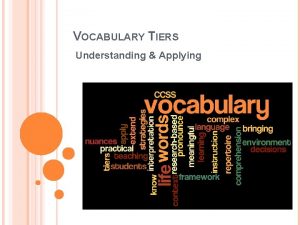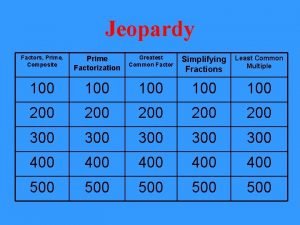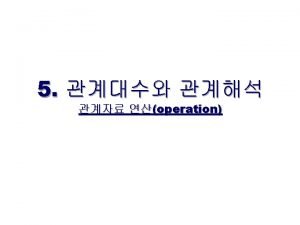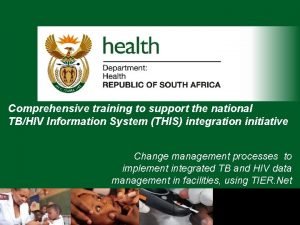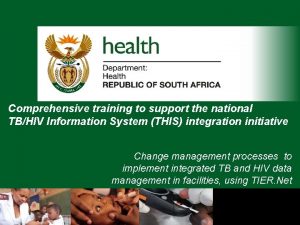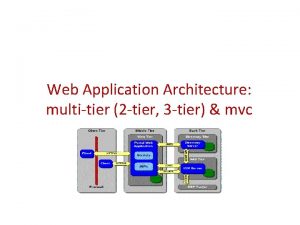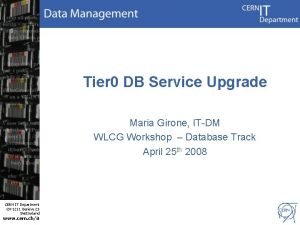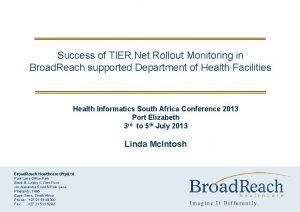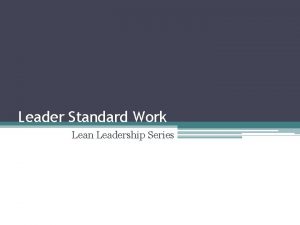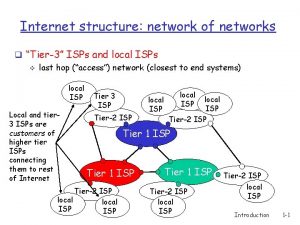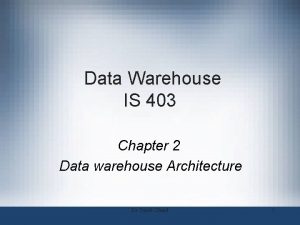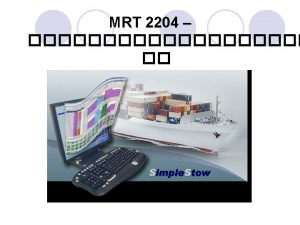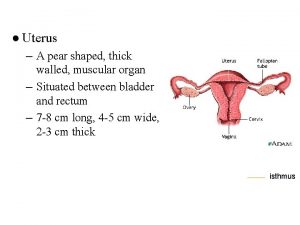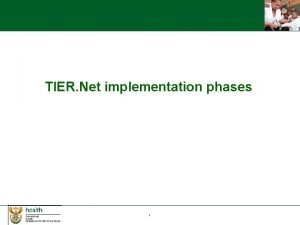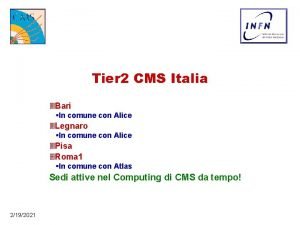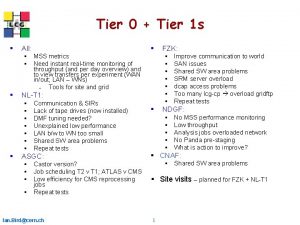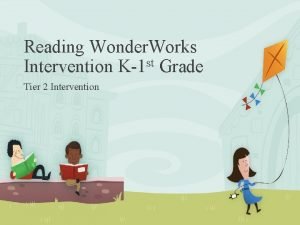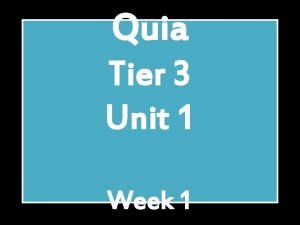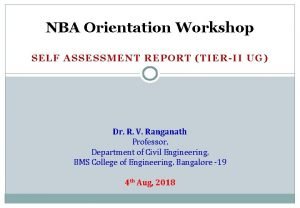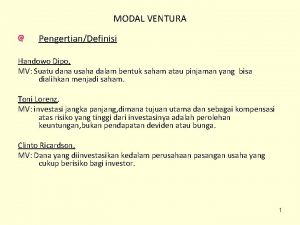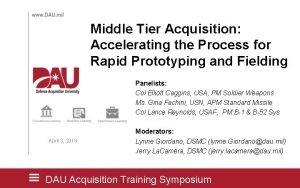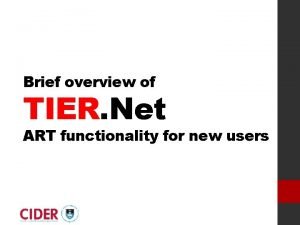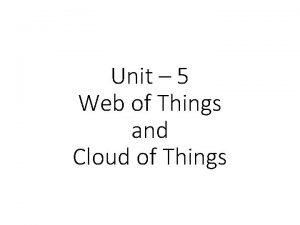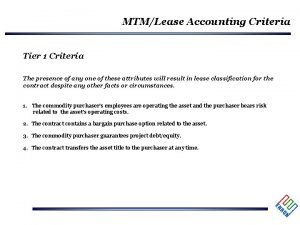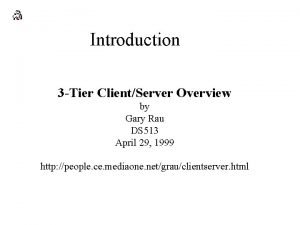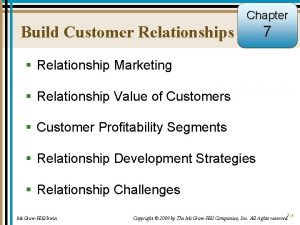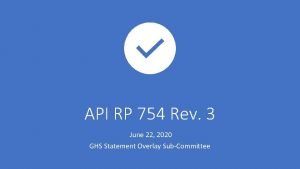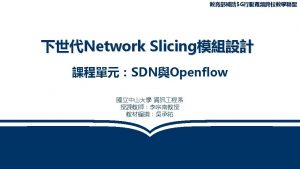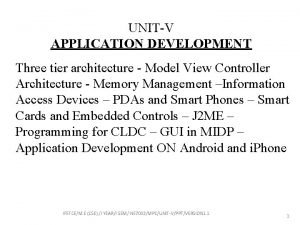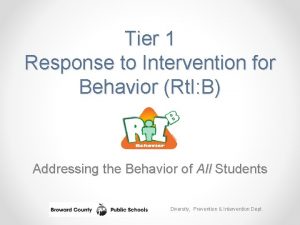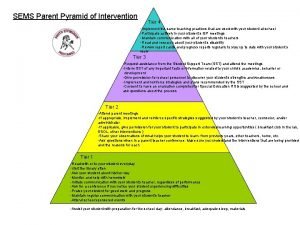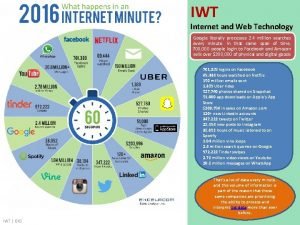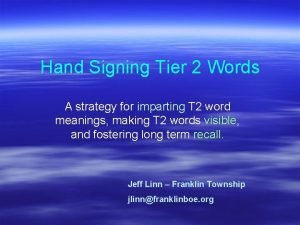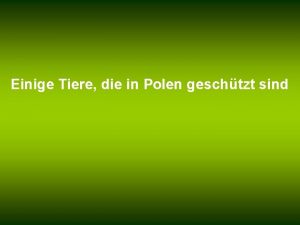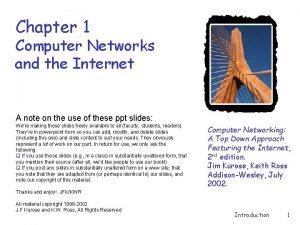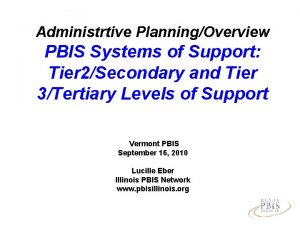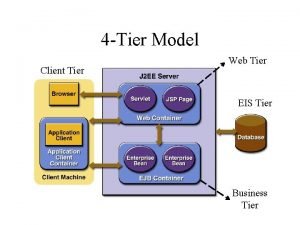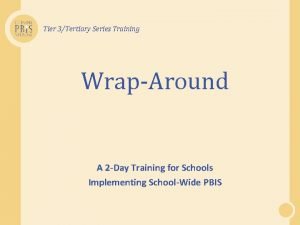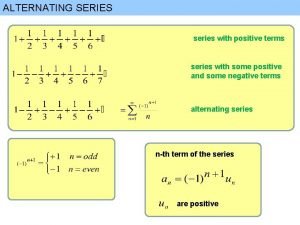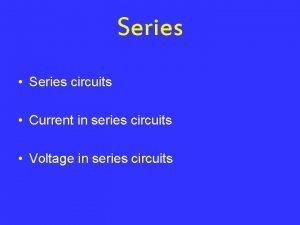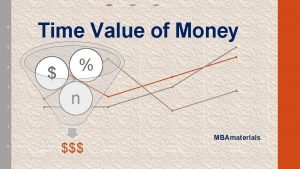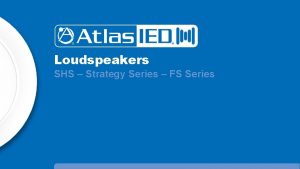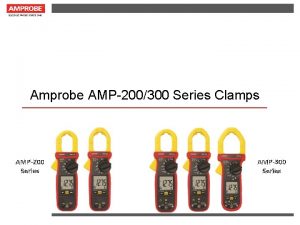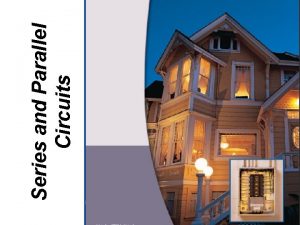Tier 2Secondary Series Training S 300 i Tier























































































- Slides: 87

Tier 2/Secondary Series Training S 300 i: Tier 2/Secondary Level of Support: Brief Functional Behavior Assessment

Acknowledgements • Terry Scott – University of Louisville • Cindy Anderson – University of Oregon • Rob Horner – University of Oregon

Training Behavioral Expectations EXPECTATION BE RESPONSIBLE TRAINING SITE Make yourself comfortable & take care of your needs Address question/activity in group time before discussing “other” topics Ask questions BE RESPECTFUL BE PREPARED Turn cell phones, beepers, and pagers “off” or to “vibrate” Check E-mails and work on you computer during breaks Contribute where possible Follow up on tasks for next training day Take (and Pass) notes (use Action Plan throughout day)

PBIS Supports the Illinois Professional Teaching Standards 1. Content Knowledge 2. Human Development and Learning 3. Diversity 4. Planning for Instruction 5. Learning Environment 6. Instructional Delivery 7. Communication 8. Assessment 9. Collaborative Relationships 10. Reflection and Professional Growth 11. Professional Conduct http: //www. isbe. net/profprep/PDFs/ipts. pdf

Assumptions and Objectives • Assumptions – Participants already conduct functional behavioral assessment and/or have this as part of their job description – Participants are facilitating the Functional Behavior Assessment process in their buildings and are working with teams to build behavior support plans for individual students • Objectives – To define: • Process for adapting planning process at your school • Core features of the competing behavior pathway • Specific tools available to facilitate FBA/BIP process

Agenda 8: 30 -10: 00 -10: 15 -11: 30 -12: 15 -1: 45 -2: 00 -2: 30 -2: 45 -3: 00 Competing Behavior Pathway Break The FBA process & systems Lunch The FBA process & tools Break Action Plan Review and Next Steps Report out on progress & next steps Questions/Concerns/Technical Assistance

Inclusion Activity 1. At your table 1. Give your name, your school, your role 2. Describe what you like best about FBA/BIP 2. Start the Starter. . Whoever has the coolest shoes will begin and will also summarize themes from the table to the whole group

Based on Research and Practical Experience…. . • By the time youth access FBA/BIP intervention, they are already at high-risk of placement change. • More youth need FBA/BIP, sooner. • FBA/BIPs are often found in the “file” and viewed as a document. • Many BIPs focus only on rewarding youth for appropriate behavior, omitting supports that make appropriate behavior more likely.

School-Wide Systems for Student Success: A Response to Intervention (Rt. I) Model Academic Systems Tier 3/Tertiary Interventions Behavioral Systems 1 -5% • Individual students • Assessment-based • High intensity Tier 2/Secondary Interventions 5 -15% 1 -5% Interventions 5 -15% Interventions • All students • Preventive, proactive Illinois PBIS Network, Revised May 15, 2008. Adapted from “What is school-wide PBS? ” OSEP Technical Assistance Center on Positive Behavioral Interventions and Supports. Accessed at http: //pbis. org/schoolwide. htm • Individual students • Assessment-based • Intense, durable procedures Tier 2/Secondary • Some students (at-risk) • High efficiency • Rapid response • Small group interventions • Some individualizing Tier 1/Universal Interventions 80 -90% Tier 3/Tertiary 80 -90% Interventions Tier 1/Universal • All settings, all students • Preventive, proactive

Positive Behavior Interventions & Supports: A Response to Intervention (Rt. I) Model Tier 1/Universal School-Wide Assessment School-Wide Prevention Systems Competing Behavior Pathway, Functional Assessment Interview, Scatter Plots, etc. nt er Int nt me (Behavior and Academic Goals) Illinois PBIS Network, Revised October 2009 Adapted from T. Scott, 2004 ve ss se Daily Progress Report (DPR) ion Tier 2/ Secondary As ODRs, Attendance, Tardies, Grades, DIBELS, etc. Tier 3/ Tertiary SIMEO Tools: HSC-T, RD-T, EI-T Check-in/ Check -out (CICO) Social/Academic Instructional Groups (SAIG) Group Intervention with Individualized Feature (e. g. , Check and Connect -Cn. C and Mentoring) Brief Functional Behavior Assessment/ Behavior Intervention Planning (FBA/BIP) Complex or Multiple-domain FBA/BIP Wraparound

SCHOOL-WIDE POSITIVE BEHAVIOR SUPPORT ~5% ~15% Primary Prevention: School-/Classroom. Wide Systems for All Students, Staff, & Settings ~80% of Students Tertiary Prevention: Specialized Individualized Systems for Students with High-Risk Behavior Secondary Prevention: Specialized Group Systems for Students with At-Risk Behavior

Continuum of Effective Behavioral Assessment and Support Functional Analysis Complex Functional Assessment Brief Functional Assessment

Identifying Who Needs a FBA/BIP • Kids are referred to an individual problem solving team by the Secondary Systems Team typically when lower-level, Simple Secondary, interventions do not result in adequate progress. – Any student not responding adequately to CICO, S/AIG and/or Mentoring etc. (Cn. C etc. ). – Request for Assistance made: • Data identifies student as in need (# of ODRs, suspensions, absences, etc. . ). • Exception to the system: Adult perceives youth as in urgent need (lower-level support not seen as adequate)



Competing Behavior Pathway Reflection 1. Identify which box(s) on the pathway would be most challenging for you to explain to another staff member? Family member? 2. What questions would you need answered to better understand explain that box? 3. Place questions on chart paper under appropriate heading(s).


Defining Problem Behavior Observable and Measurable Non-Examples • Hyperactive • Aggressive • Delinquent • Psychotic • Irresponsible Examples • Out of seat and walking around the room touching other student’s things • Hits with hands and kicks peers • Steals valuable items from peers • Reports seeing monsters • Arrives to class late 75% of the time

Defining Problem Behavior • Frequency – “every day”, “several times a day” • Duration – Ex. “will scream until exhausted, usually 10 mins. ”, “hits once, then stops” • Intensity – Ex. “screams loudly”, “bangs head lightly” • Latency – Ex. “immediately following a request” • “During less structured activities, almost every time another youth is rewarded (5 -10 times a day), Johnny immediately stomps his feet with full strength until an adult intervenes (usually 3 mins)”

Antecedent (fast trigger) Non-Examples “Sue wants control” “Request to do something, request to work on assignments” “Student has low selfesteem and has missed 11 days so far this year” “Sitting in large group” “Student refuses to listen” “When corrected or redirected by staff” “There are no triggers” “Physical place, such as games like “tag” at recess”

Functions Pos Reinf Neg Reinf

Maintaining Consequence meets the function/motivation for the behavior (common mistakes) • Dual function – Focus on primary for brief FBA • One function as maintaining consequence and another under function – Maintaining Consequence IS Function • Control, Power, Revenge as Function – To obtain, to escape

Setting Event • “Setting event, plus discriminative stimulus, set the occasion for a response that is maintained by a reinforcer” Or you could say… • “Setting events make triggers more likely to cause problem behavior”

Setting Event (slow trigger) Non-Examples “History of academic failure” “Academic frustration, build up of peer conflict (real or perceived)” “ADHD” “Parents divorce” “Unstructured times, such as the hall, special classes” “Transitions” “Premature” “Tardy to school”

Desired Behavior

Current Consequence Consider what most peers obtain from desired behavior Example: Desired Behavior: “on task and complete homework” Maintaining Consequence: “passing grades, decreased office referral”

“Alternative” or “Replacement” Behavior(s) Replacement behaviors must maintain the same function for the student with the same accuracy and efficiency as the problem behavior.

What Skill(s) Does this Student Need? • What does he need/want/get from his inappropriate behavior? • How is the current behavior reinforced? • What new behavior does he need to learn? • How will the new/appropriate behavior be reinforced?

Replacement Behaviors Non Examples “Sit quietly at desk” “When teacher puts hand over mouth the student will raise hand teacher will call on student next (function: attention)” “Student will create and maintain relationships with peers and staff that do not result in conflict or negative actions (ODRs)” “Student will develop impulse control and behavioral self control” “Student will do 3 problems, then use a break card. (function: escape from classwork)”

Break

Outcomes of a Functional Behavioral Assessment • Operationally defined problem behavior(s) • Identify routines in which the problem behavior is most and least likely to occur • Define the antecedent events (triggers; setting events) that predict when the problem behavior is most likely • Define the ONE consequence that contributes most to maintaining the problem behavior in that routine. • Summary Statement of findings.

Building a Summary/Hypothesis Statement A statement about the relation between events that precede (trigger) problem behavior and /or events that follow and maintain the behavior. Setting Event (slow trigger) Antecedent (fast trigger) Problem Behavior Maintaining Consequence Function

Caesar has dyed his hair three colors & is teased several times by his friends before class. When he enters the class, his teacher stares at his hair. Caesar immediately says “what are you staring at? ” His teacher immediately sends him to inschool detention. Escape adult & What peer function? attention Setting event Caesar is teased several times about his hair by his friends before class Antecedent Response Consequence His teacher stares at his hair in class Caesar asks his teacher what she’s staring at His teacher sends him to in-school detention

When Sequoia misses her 12: 30 counseling session & teachers present multiple task demands, she makes negative self-statements & writes profane language on her assignments. Teaching staff typically send her to the office with a discipline referral for being disrespectful. What function? Avoid difficult tasks Setting event Misses 12: 30 Counseling Antecedent Response Consequence Teachers make multiple task demands Sequoia makes negative selfstatements & writes profane language Teacher sends Sequoia to office for being disrespectful

Non-example of Summary Statement Teams Summary Statement: “Jason displays elevated level of attention seeking behavior which may reflect both his sensory issues, and his present level of integration wherein he has not yet achieved an internalized locus of control. He escapes non-preferred or challenging tasks by being removed from the setting. ” Example Summary Statement: When Jason is redirected by teacher, has disagreement with peers, or is asked to stop inappropriate behaviors he throws objects, hits students which is maintained by attention from peers and adults.

3 -Tiered System of Support Necessary Conversations (Teams) Universal Team Plans SW & Class-wide supports Universal Support Secondary Systems Team Problem Solving Team Tertiary Systems Team Uses Process data; determines overall intervention effectiveness Standing team; uses FBA/BIP process for one youth at a time Uses Process data; determines overall intervention effectiveness CICO SAIG Group w. individual feature Brief FBA/BIP Sept. 1, 2009 Brief FBA/ BIP Complex FBA/BIP WRAP

Teaming at Tier 2 • Secondary Systems Planning Team – Uses process data from CICO, S/AIG, Simple Individualized Secondary & Brief FBA/BIP supports to: a) determine overall intervention effectiveness for each, b) improve integrity, fidelity, procedures etc. for each, c) create interventions that are missing from continuum • Secondary Problem Solving Team – Develops plans for one student at a time – Every school has this type of meeting – Teachers and family are part of student’s team

FBA/BIP Facilitator a) Illustrates FBA to the rest of the team through the Competing Behavior Pathway; including hypothesized function; and shares data sources and process used; including interviews that were done. b) Leads the team in creating a BIP; making sure all stakeholders give input and agree with aspects of the plan that require their action. Other team members/Stakeholders: a) Ask questions for clarification on FBA & come to consensus on hypothesized function or briefly brainstorm alternative function together with FBA/BIP Facilitator. b) Work with FBA/BIP Facilitator in creating the BIP; contributing as an ‘implementer’ for parts of BIP where needed (ex. SW may add student to group counseling, Special Education teacher may see youth for after-school tutoring, Counselor may add youth to CICO)

TEAMING: Who Will be a “Brief FBA/BIP Facilitator”?

Why Do Functional Behavior Assessment (FBA)? • Behavior intervention plans built from functional assessment are more effective. • Research indicates clearly that an effective intervention is tied to function.

Activity: Reflecting on Current Practices… • Think of the team or meeting you have when you discuss individual youth (FBA/BIP). • Take a guess at how many youth you action planned around this school year? • Take a guess at how many youth got an intervention that met their needs. How many youth stayed in current environment or went to a less restrictive environment. • What percent effectiveness does your problem solving team yield?

The FBA/BIP Process 1) Secondary Systems Team identifies youth needing FBA/BIP level of support. Referral to individual Problem-Solving Team meeting. 2) FBA/BIP facilitator (i. e. social worker, counselor, psychologist) takes lead in organizing data and using tools to conduct the FBA. 3) FBA/BIP facilitator generates FBA summary based on data to share with Problem-Solving Team. 4) Problem-Solving Team develops BIP (with stakeholders). 5) Follow-up meeting scheduled (in 4 -6 wks) for all stakeholders to review progress of BIP. 6) Weekly data monitored by FBA/BIP Facilitator.

EM S ST TA Adapted from “What is a systems Approach in school-wide PBS? ” OSEP Technical Assistance on Positive Behavioral Interventions and Supports. Accessed at http: //www. Pbis. org/schoolwide. htm DA Supporting Staff Behavior ٭ OUTCOMES SY Positive Behavior Support Social Competence & Academic Achievement PRACTICES Supporting Student Behavior Supporting Decision Making

Identifying Who Needs a FBA/BIP • Kids are referred to an individual problem solving team by the Secondary Systems Team typically when lower-level, Simple Secondary, interventions do not result in adequate progress. – Any student not responding adequately to CICO, S/AIG and/or Mentoring etc. (Cn. C etc. ). – Request for Assistance made: • Data identifies student as in need (# of ODRs, suspensions, absences, etc. . ). • Exception to the system: Adult perceives youth as in urgent need (lower-level support not seen as adequate)



Pause for reflection: Eating Apples vs. Eating ONLY Apples


TEAMING: What Tools/Data Do You Currently Use for Brief FBA/BIP?

Questionnaire, Interview (indirect) Tools • FACTS Function Assessment Checklist for Teachers and Staff • FBA Family-directed interview • Student directed Interview • Assessing activity routines • Problem-behavior questionnaire • Forced-choice reinforcement menu • Setting event checklist • SIMEO: SD-T (shortened version for FBA) • SIMEO: EI-T

Observation (direct) Tools • Scatter plot • ABC chart • Functional Assessment Observation Form • DPR Card

Using the FACTS Functional Assessment Checklist for Teachers & Staff • Structured interview questions used with teachers and staff. • Guides interviewee to think specifically about components of the Competing Behavior Pathway.

Brief FBA Minimum Key Components: Teacher(s) Interview, Observable Problem Behavior and Summary Statement, Student Interview, Family Interview Continue data gathering until key components are in place.

Exploring the FACTs 1. Find FACTs interview in folder. 2. Each step will be described and then at your table brainstorm possible questions you would ask a teacher to gather information necessary to complete FBA. Example: Step #2: Student’s Strengths “What are the student’s strengths? ”

FACTS Step #2: Identify Strengths • Identify at least three strengths or contributions that the student brings to school • Important for developing an effective support plan – Makes it more likely that youth will find strategies appropriate, and buy-in to the plan – Makes it more likely youth will be successful (i. e. learn replacement behavior quickly) – New behaviors more likely to be sustained

FACTS Step #3: Identify Problem Behavior

Referrals by Problem Behavior

FACTS Step # 4: Routines Analysis • Routines to identify – Context in which the problem behavior does and does not occur • Identifying routines – Obtain student schedule and rating of frequency of problem behavior – Look for similarities in context across similar activities

Referrals by Location


Example: Student Daily Progress Report (from S/AIG) NAME: ___________ DATE: _________ Teachers please indicate YES (2), SO-SO (1), or NO (0) regarding the student’s achievement to the following goals. 1 st block 2 nd block 3 rd block 4 th block EXPECTATIONS Be Safe Use your words Use deep breathing 2 1 0 Be Respectful Keep arm’s distance Use #2 voice level when upset 2 1 0 Be Responsible Ask for breaks Self-monitor with DPR 2 1 0 Total Points Teacher Initials 2 1 0

FACTS Step 5: • List the Routines in order of Priority for Behavior Support • FACTS Part B will be used for each routine/behavior you list here (may be sooner or later)


FACTS Step 7: (Part B) Make Sure You Can See the Behavior!

FACTS Step #8: Identifying Antecedents/Triggers • Response occurs much more often in presence then absence • What happens immediately before the behavior? • Very specific: where, when, with whom the problem behavior occurs? • Where, when, with whom desirable behavior is more likely to occur?

Referrals by Time of Day

FACTS Step #8: Identifying Antecedents/Triggers (Cont. ) • What events, contexts, demands, tasks, people reliably trigger/precede the behavior? • Can you identify events you could change that would prevent the problem? • Do you clearly understand what does and does not evoke the problem behavior? • Probe question – If you were going to do one thing to make it REALLY likely the problem happened, what would it be? – If I did _______ ten times, how many times would problem behavior occur?

Step 9: Identifying Setting Events 68

Environmental Setting Events • Neighborhood • Quality of Life • Interactions/Reactions • Home Environment • Level of Curriculum • Instructional Arrangements

Behavioral Learning Styles as Setting Events • Preferred Activities • Length of Task • Modality • Multiple Intelligence • Choice Making • Skill Level • Level of Activity

Personal Factors as Setting Events • Medications • Sleep • Chronic Illness • Nutrition • Arousal • Sensory Sensitivity

FACTS Step #10: Identifying Consequence and Function • What happens immediately after the problem behavior? – How do adults respond? – How do peers respond? – What does the student start or stop doing? • Do I understand how the behavior is paying off/why the student is doing this? • Probes: – Think of the last 10 times this behavior happened; how many times did X follow?


Functions Pos Reinf Neg Reinf

FACTS Step 11: (Last Step) Summary Statement Setting Events Infrequent events that affect value of maint. conseq. Antecedent (Fast Trigger) Challenging Behavior Maintaining Consequences Preceding events that trigger or occasion Set of related behaviors of concern Following events that maintain behaviors of concern

Student-Directed Functional Assessment Interview Define the behaviors of concern. * “What are things you do that get you in trouble or are a problem? ” (Prompts: Late to class? Talk out in class? Don’t get work done? Fighting? ) Complete student schedule. Use the “Student Daily Schedule” matrix to identify the times and classes in which the student performs problem behavior. Focus the interview on those times that are most likely to result in problem behavior.

Family-Directed Functional Assessment Interview a. What are things that _______ does that tend to get him/her into trouble at school? Specifically, what would you say is the ‘problem behavior’ at school? b. What do you think is happening at school that leads _______into getting into trouble/having difficulty? (What happens before, makes him/her upset or makes the problem more likely to happen? ) c. In general, do you have any thoughts as to why/how this is happening? Is_____ trying to get something or avoid something? Is he/she being triggered or set off by something at school?

FBA/BIP Template Review 1 st page Rest of document focuses on BIP (covered in S 301 i)

FBA/BIP Competing Behavior Pathway Student Strengths 5 6 Desired Behavior 4 Setting Event 2 1 Trigger/Antecedent Problem Behavior(s) 7 Replacement Behavior Adapted from Sugai, G. , Lewis-Palmer, T. , & Hagan-Burke, S. , 2000 Current Consequence 3 Maintaining Consequence 8 Function

FBA/BIP Competing Behavior Pathway Student Strengths Work cooperatively and productively during group activity 5 Improvement on grades for group task 6 Desired Behavior Negative interactions with peers/Academic difficulties 4 Setting Event Academic, groups activity with low supervision Fighting Punching Escapes negative peer comment because peers are subdued 2 1 3 Trigger/Antecedent Problem Behavior(s) Request break from group activity Request to work with other peers 7 Replacement Behavior Adapted from Sugai, G. , Lewis-Palmer, T. , & Hagan-Burke, S. , 2000 Current Consequence Maintaining Consequence 8 Function

Recommended Time-frames for Data Review • Simple Secondary: (ex. Check-In/Check-Out, Social/Academic Instructional Groups) – Facilitator reviews bi-weekly, secondary system team only reviews in aggregate two times monthly • Individualized Simple Secondary: (ex. Check-&Connect, Brief FBA/BIP) – Facilitator reviews weekly, problem solving team reviews monthly for Brief FBA/BIP • Tertiary/Complex Individualized Interventions: (ex. FBA/BIP & Wraparound) – Facilitator reviews daily, team reviews weekly/biweekly

Break

Activity: Time 20 mins Using the Guiding Questions (Section 4, items 1 -3) Start creating/improving your Brief FBA/BIP System

TEAMING

Report Out on Progress & Next Steps • What parts of your FBA/BIP system are working best? Why? • What needs to be added/changed (systems, data, practices)? • What info needs to be gathered? • What are next steps? • Who will take lead? • Timeline?

Evaluation and CPDU Process For individuals who registered through Cvent 1. All registrants will receive an email two days after the training asking them to complete an evaluation using the link provided. 2. By clicking on the link, registrants are to complete the evaluation by following the prompts. 3. Once the evaluation is completed, an additional email will automatically be generated thanking the registrant for their time and offering the CPDU link for the session they just attended. 4. When registrant clicks on the CPDU link, the form shows up on the screen in PDF format and is printable.

Evaluation and CPDU Process For individuals who did not register prior to the training 1. The attendee contact information will be entered into Cvent and then the evaluation email will be sent two days after the training asking them to complete an evaluation using the link provided. 2. Attendee’s follow the same process for completing the evaluation and obtaining CPDUs as those individuals who registered through Cvent.
 Tier 1 2 3 vocabulary words
Tier 1 2 3 vocabulary words Vocabulary pyramid
Vocabulary pyramid 300 + 200 + 200
300 + 200 + 200 Prime and composite jeopardy
Prime and composite jeopardy 200+200+300+300
200+200+300+300 200 300 300
200 300 300 200+100+300
200+100+300 300+300+400
300+300+400 300+300+400
300+300+400 300 + 300 + 400
300 + 300 + 400 300+300+400
300+300+400 400 + 300 + 300
400 + 300 + 300 300 300 400
300 300 400 300 square root
300 square root 100 + 200 300
100 + 200 300 Tier.net training manual
Tier.net training manual Tier.net training manual
Tier.net training manual Maclaurin series vs taylor series
Maclaurin series vs taylor series Balmer series lyman series
Balmer series lyman series Taylor series of composite function
Taylor series of composite function Taylor series lesson
Taylor series lesson Ibm p series vs i series
Ibm p series vs i series General
General Series aiding and series opposing
Series aiding and series opposing Arithmetic sum formula
Arithmetic sum formula Training is expensive without training it is more expensive
Training is expensive without training it is more expensive Perbedaan on the job training dan off the job training
Perbedaan on the job training dan off the job training Aggression replacement training facilitator training
Aggression replacement training facilitator training N tier architecture
N tier architecture Three tier system of health infrastructure
Three tier system of health infrastructure Tier 2 advanced power strip
Tier 2 advanced power strip Maria tier 0
Maria tier 0 Tier 1 interventions examples
Tier 1 interventions examples Tier net
Tier net Tier 1 status
Tier 1 status Six tier health system in ethiopia
Six tier health system in ethiopia Leaders standard work
Leaders standard work Tier 3 isp
Tier 3 isp Aseptic technique nsw health
Aseptic technique nsw health Advantages of data warehouse
Advantages of data warehouse Cpcs job grade 12
Cpcs job grade 12 Stowage plan for bulk cargo
Stowage plan for bulk cargo Explain the three tier architecture of data warehouse
Explain the three tier architecture of data warehouse Isservicetier
Isservicetier Uterus pear shaped
Uterus pear shaped Fro.comtier
Fro.comtier Tier.net modules
Tier.net modules Cms italia
Cms italia Tier 1 metrics
Tier 1 metrics K-trider level 1
K-trider level 1 Example of rhythm
Example of rhythm Self assessment report nba
Self assessment report nba Handowo dipo
Handowo dipo Middle tier acquisition
Middle tier acquisition Louisiana tier ii reporting
Louisiana tier ii reporting Thin client vs thick client
Thin client vs thick client Tier net
Tier net Aiesec tier 5
Aiesec tier 5 Unified multitier wot architecture
Unified multitier wot architecture Modern siem
Modern siem Telekommunikációs hálózatok elte
Telekommunikációs hálózatok elte Tier 1 isp
Tier 1 isp Tier 1 vocabulary
Tier 1 vocabulary Ohio medical marijuana control program
Ohio medical marijuana control program Mtmrents
Mtmrents My sql
My sql Rau tier
Rau tier Is bc and bce the same
Is bc and bce the same Bc vs bce
Bc vs bce 4 tier customer pyramid
4 tier customer pyramid Jkl tier 3
Jkl tier 3 Api 754 tier 3 definitions
Api 754 tier 3 definitions 2 tier architecture
2 tier architecture Three dumb routers
Three dumb routers Marzano tier 2 vocabulary list
Marzano tier 2 vocabulary list Unitv apk cracked
Unitv apk cracked Tier 4 maintenance funds
Tier 4 maintenance funds Tier 1 instruction
Tier 1 instruction Tier 2 weight management service specification
Tier 2 weight management service specification Pyramid of intervention
Pyramid of intervention Kuskus tier
Kuskus tier 5-tier hierarchy
5-tier hierarchy Three tier layer
Three tier layer Msexchange mid-tier storage 2009
Msexchange mid-tier storage 2009 Hand in a tier 2
Hand in a tier 2 Foka tier
Foka tier Tier 1 isp
Tier 1 isp California energy commission tier 2
California energy commission tier 2
